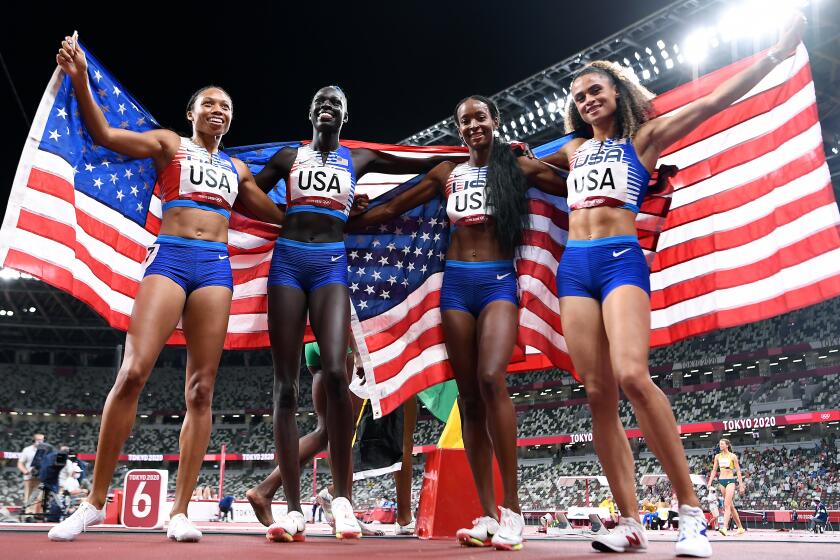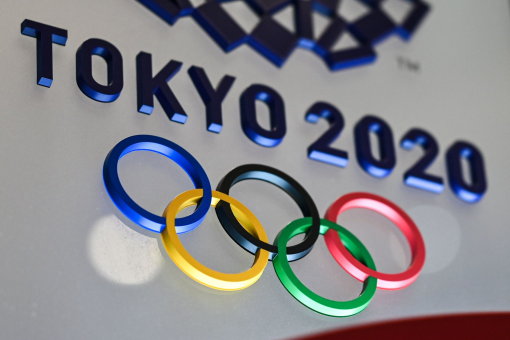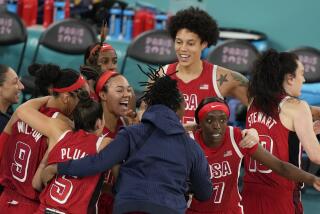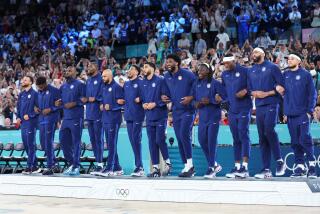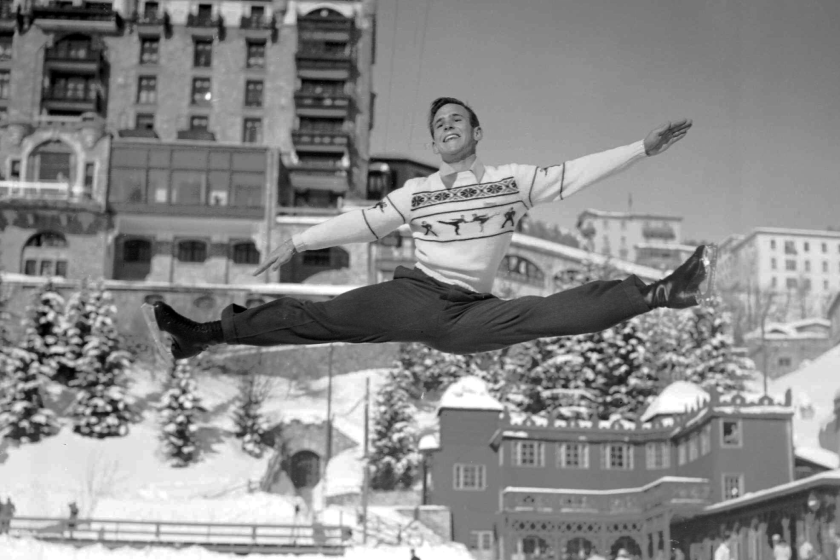U.S. women’s basketball defeats Japan for seventh consecutive Olympic gold
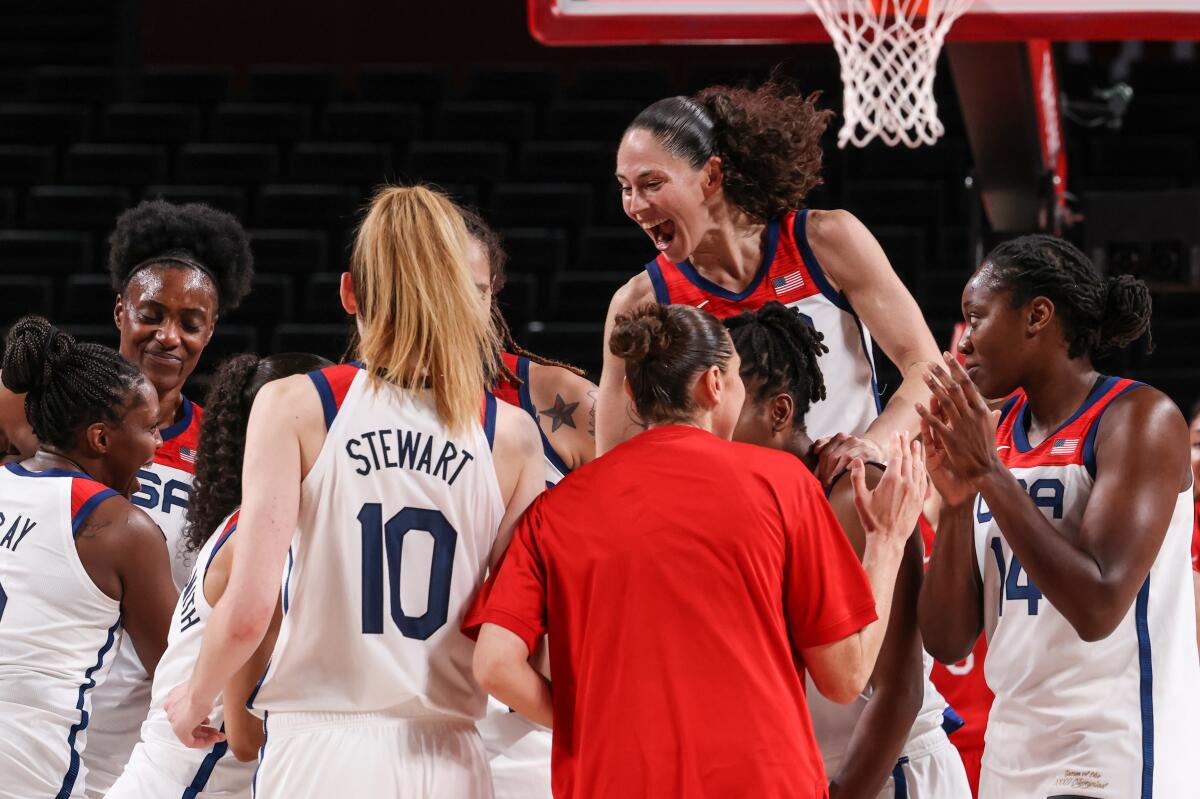
- Share via
SAITAMA, Japan — Fifty-five.
It started with a bounce back, a recovery from a loss to leave Barcelona with a bronze.
That one win turned into a streak in Atlanta, with Dawn Staley becoming the heartbeat of a team of legends as its point guard.
By the end of those games, it was nine in a row, American players reclaiming gold.
In Australia, they won eight more, the winning streak building as quickly as their sport’s emerging footprint in America. In Athens, with new blood such as Diana Taurasi and Sue Bird on the roster, they won eight more.
Over the next 17 years, they stacked wins and gold medals, building an unstoppable dynasty at the Olympics, the safest bet there was. The two-game winning streak Staley built in 1996?
A day after winning bronze in the 400 meters, Allyson Felix wins gold with the 1,600-meter relay team at the Tokyo Olympics. It’s her 11th medal.
It had grown to an absurd 54 games by the time of Sunday’s Olympic game.
And to celebrate win No. 55, they were given gold.
“We saved our best performance for our last performance,” said Staley, now the team’s coach.
For the seventh straight Olympics, no one was better in the women’s basketball tournament, the Americans unbeaten and mostly unchallenged as they routed host Japan 90-75 Sunday morning.
Brittney Griner scored 30, A’ja Wilson had 19 and the Americans never were threatened on their way to another dominant performance, icons of the Team USA program walking off the court again as champions.
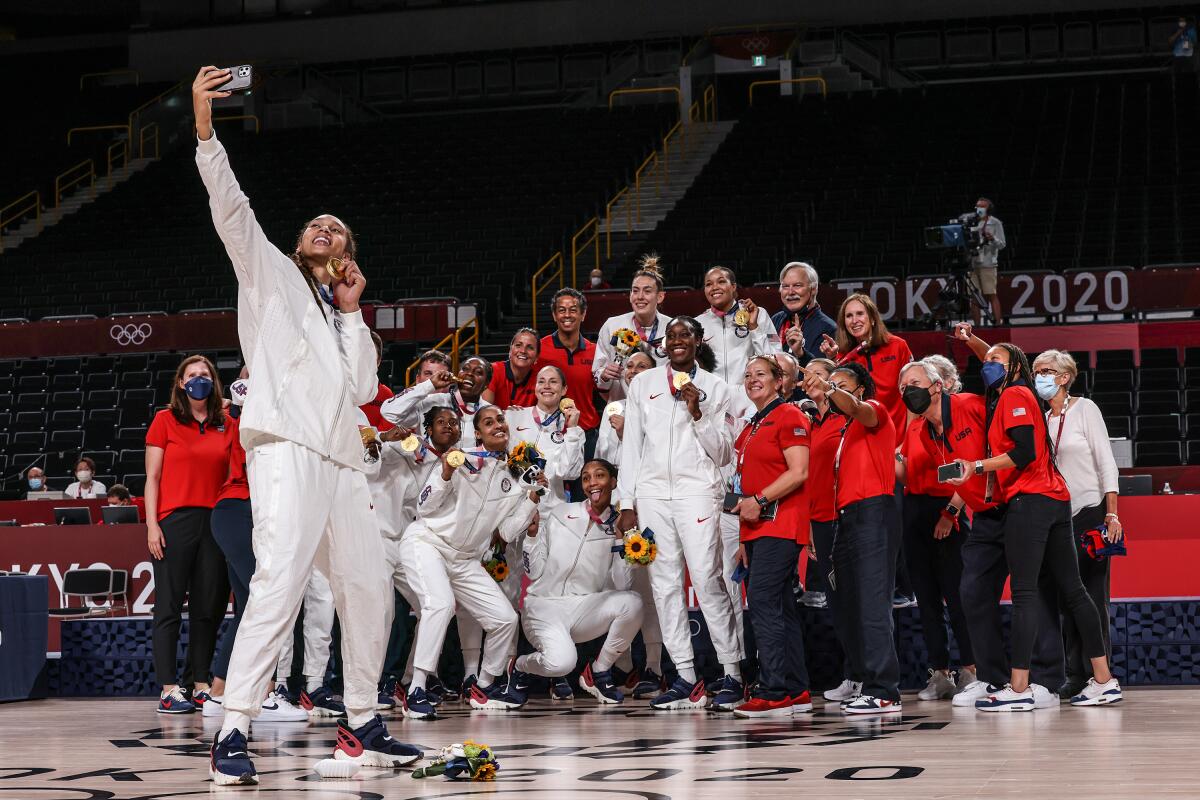
The win closes one of the most prolific chapters in American athletic history, with Bird and Taurasi exiting the international stage after five Olympics and five gold medals.
No one has accomplished the feat in the sport. Their success on the court has been exceeded only by their influence off of it.
“They really did this five times?” Wilson asked. “It makes you want to come back and continue to give and build for the next generation.”
Taurasi is regarded as maybe the best female basketball player of all time, a Kobe Bryant disciple who has won at every level she’s competed at.
Fighting through injuries to compete in Tokyo, Taurasi has still flashed her signature combination of skill and swagger. And Bird, even at 40, still bounces around the floor like an over-caffeinated pinball, an endless source of energy while running the team on the floor.
She’s been a pioneer in the game, has worked in the front office with the Denver Nuggets and helped advocate for women’s sports with her partner, U.S. soccer star Megan Rapinoe.
Fittingly, the game opened with Bird hitting a jumper.
Replacing pillars without tearing down a structure is usually complicated, but the American basketball machine has continued to produce stars, the U.S. playing with unmatched size, aggression and skill compared with the rest of the world.
Monday in Japan is a national holiday called “Yama no Hi” — Mountain Day. One day before they celebrate the size and majesty of Mt. Fuji, the Japanese had to try to score over Griner and Mt. Wilson.
“That’s our game — it’s inside out,” Wilson said about her and Griner’s success.
Early in the final, Japan’s Himawari Akaho, a 6-foot-1 forward, tried to drive past the 6-9 Griner, with the American center easily swatting the ball out of bounds, left shaking her head at the audacity of Japan to try her.
Later in the first quarter, as if to remind everyone she’s more than just a big body, Griner confidently swished a mid-range jumper, the Japanese unable to stop her away from the basket too.
Her 30 points were the most scored by an American woman in a gold-medal game. And then there was Wilson, the reigning WNBA most valuable player, putting her hands in the sky and holding the ball like it was a toy she was keeping away from a toddler.
She bounced off overmatched and undersized defenders for turnaround jumpers or, sometimes, simply just went through them. The two bigs, alongside Breanna Stewart and her inside-out skills, should be the centerpieces of U.S. women’s basketball in international competitions moving forward.
Japan, to its credit, did its part to make the final entertaining despite the obvious physical mismatches. The Japanese team used its quickness and craftiness to find open seams with backdoor cuts in the halfcourt while trying to hold down the turbo button in the full court.
But the optical contrasts told the story, never better than when 5-3 guard Rui Machida went underneath a Griner screen by literally going underneath Griner, scrambling to crawl between the center’s legs.
More to Read
Go beyond the scoreboard
Get the latest on L.A.'s teams in the daily Sports Report newsletter.
You may occasionally receive promotional content from the Los Angeles Times.

